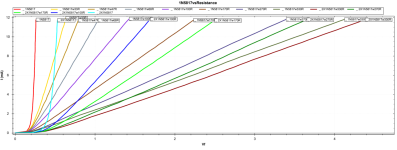debrad
Active member
I recently purchased a batch of 30 D9D diodes from a Ukrainian seller on eBay and sat down to measure the forward voltages tonight.
What I found appears to be in line with the measurements that @SillyOctpuss posted in this thread (https://forum.pedalpcb.com/threads/diode-forward-voltages.13607/post-153914) for some other D9* diodes but I wanted to know if this sounds reasonable:
Most of the D9D diodes I received were in the 0.2-0.3 V range but some measured as high as 0.59-0.65 V.
Does it make sense that some would measure that high or should it make me suspicious that they may be some other type?
What I found appears to be in line with the measurements that @SillyOctpuss posted in this thread (https://forum.pedalpcb.com/threads/diode-forward-voltages.13607/post-153914) for some other D9* diodes but I wanted to know if this sounds reasonable:
Most of the D9D diodes I received were in the 0.2-0.3 V range but some measured as high as 0.59-0.65 V.
Does it make sense that some would measure that high or should it make me suspicious that they may be some other type?


